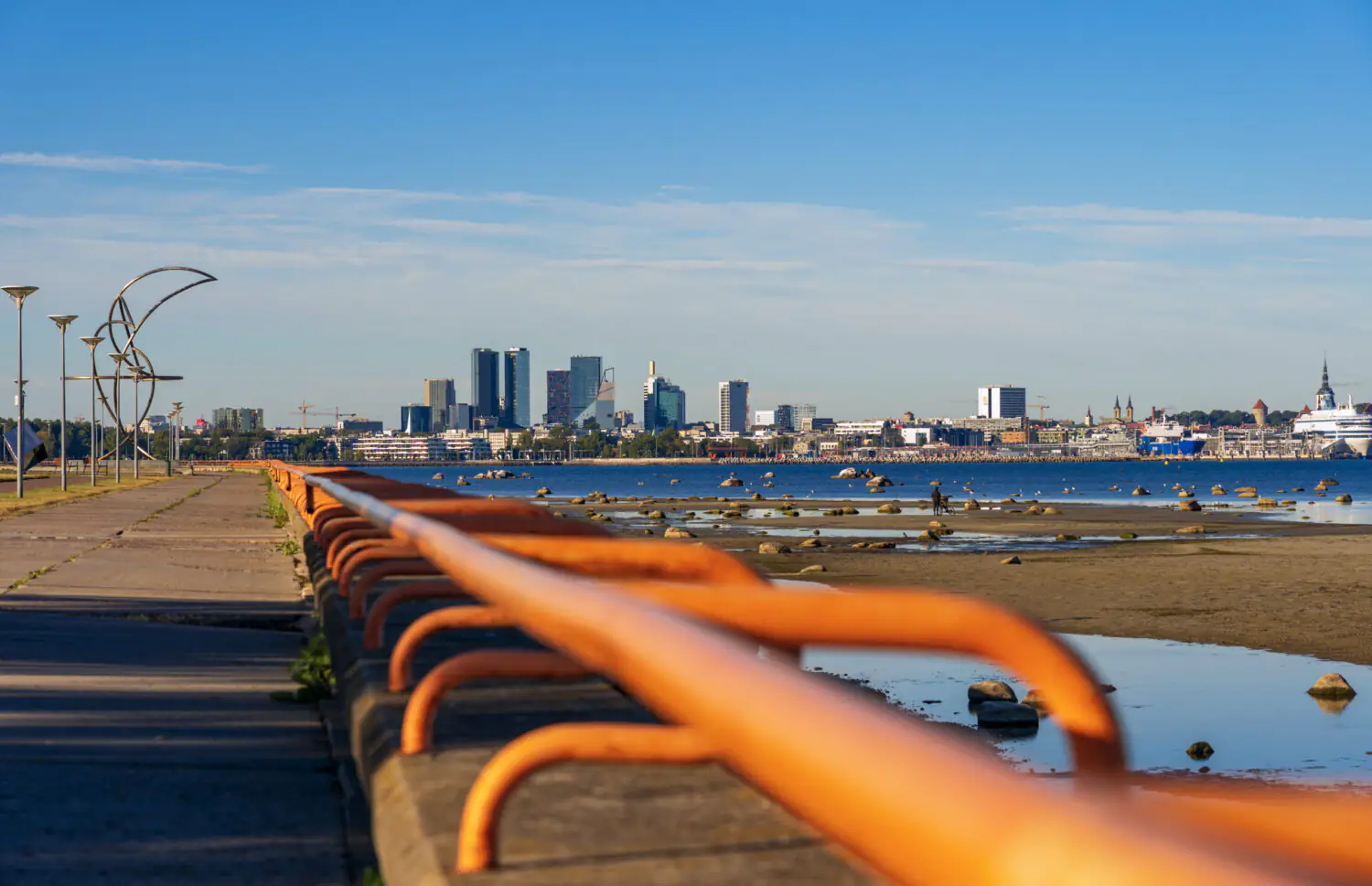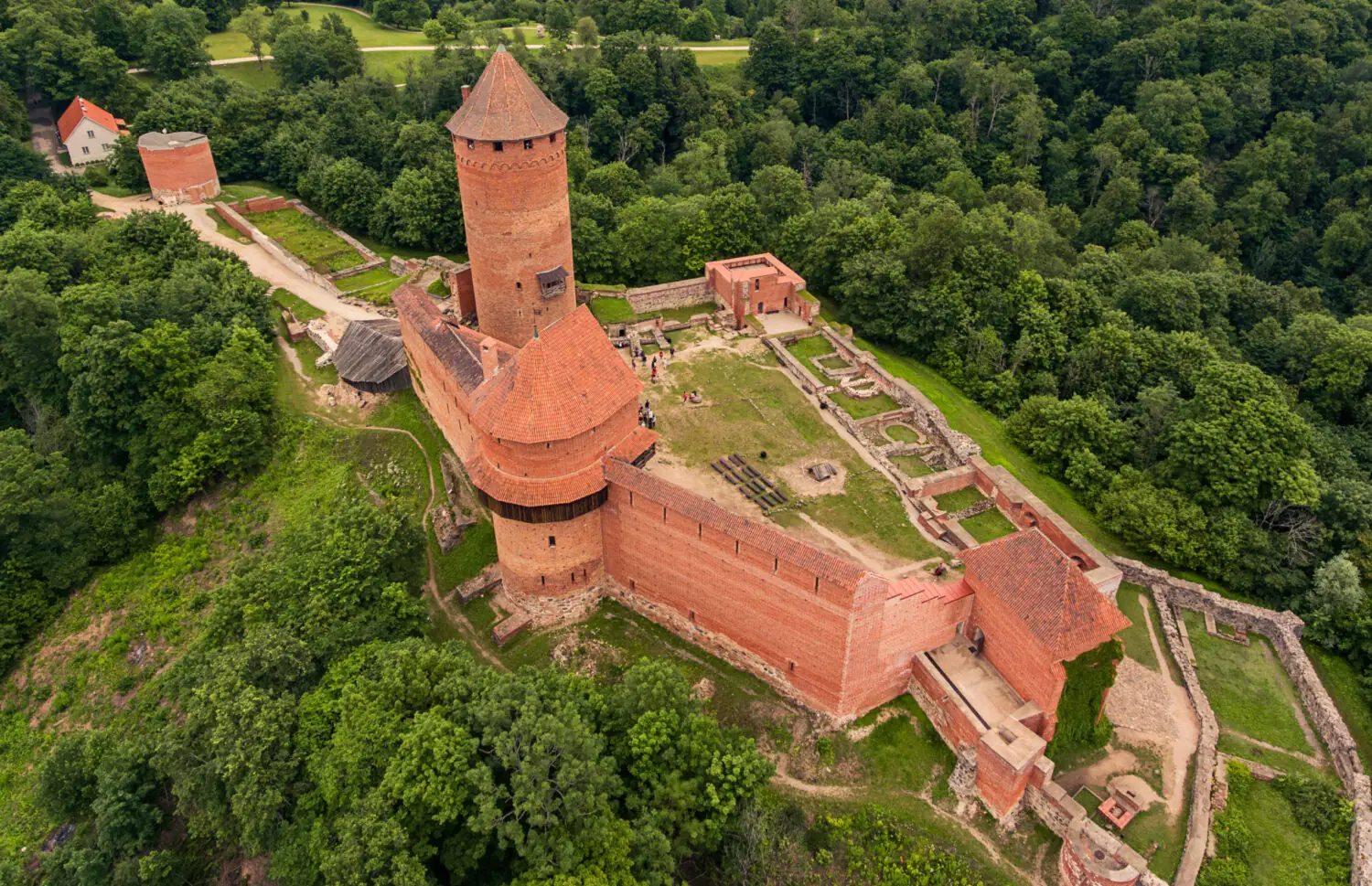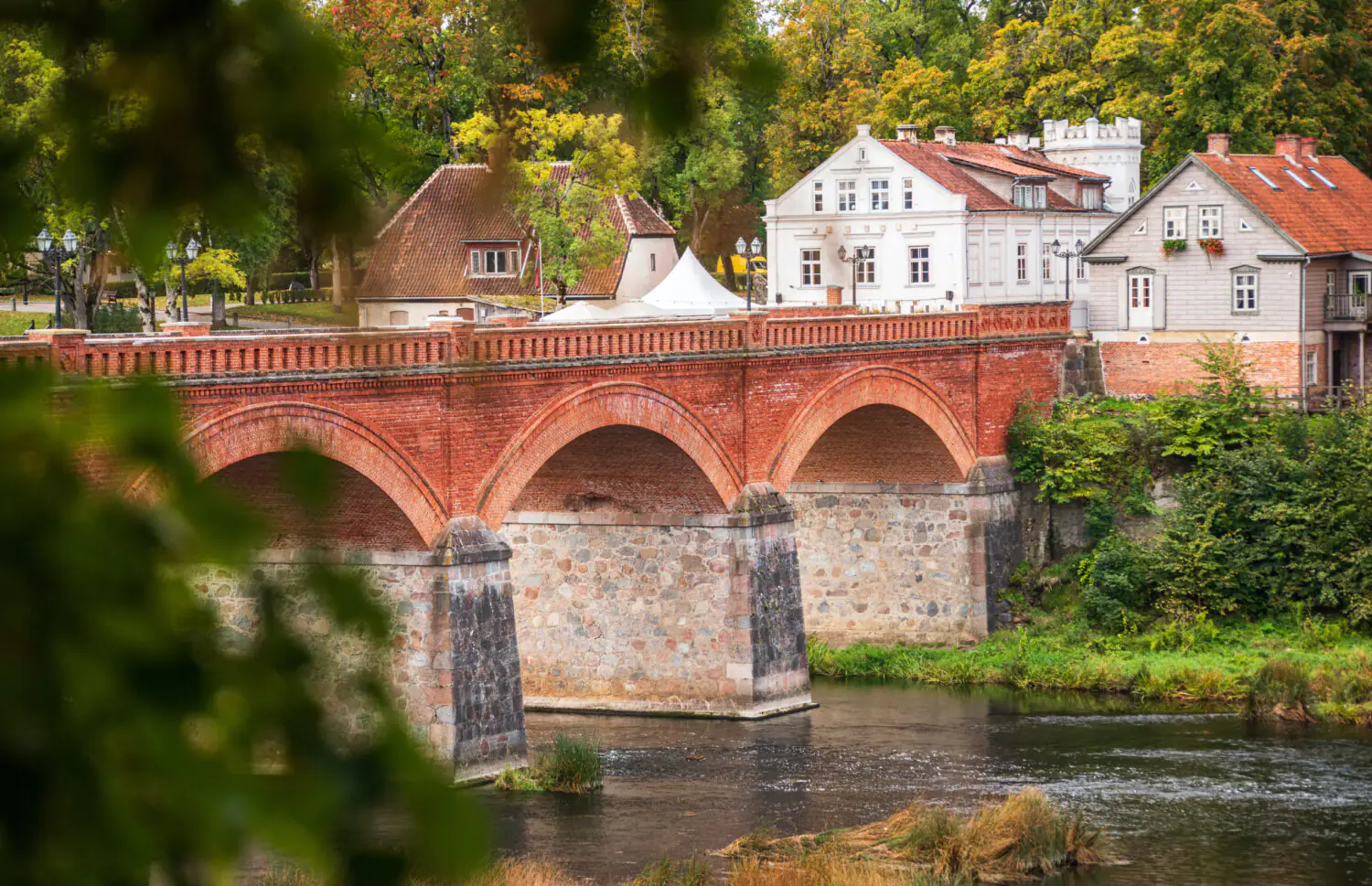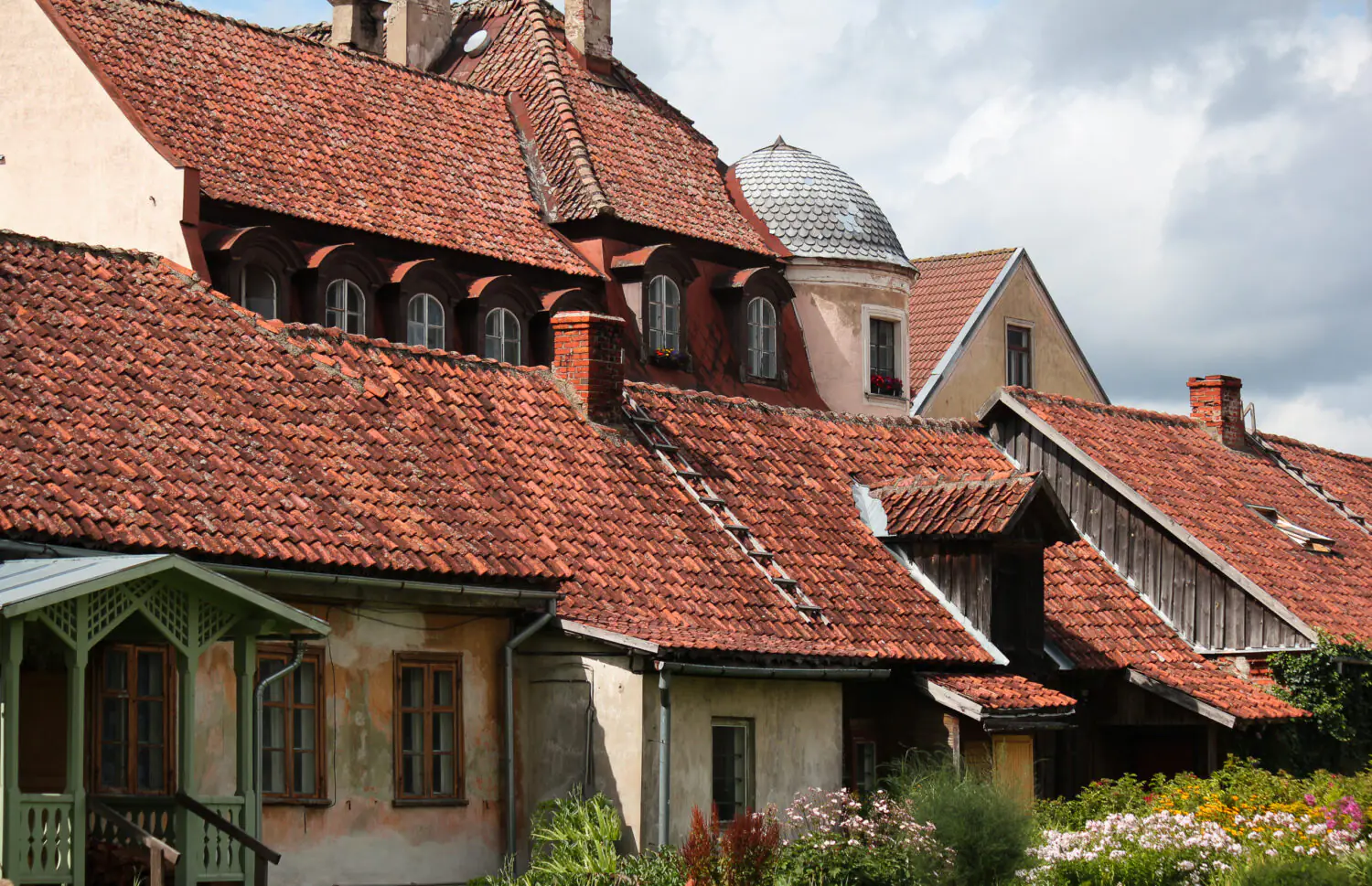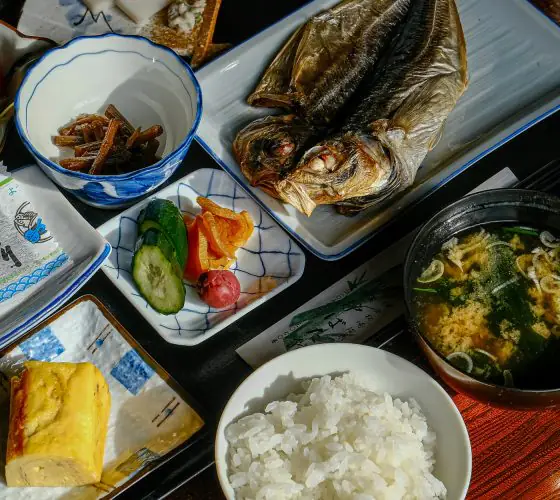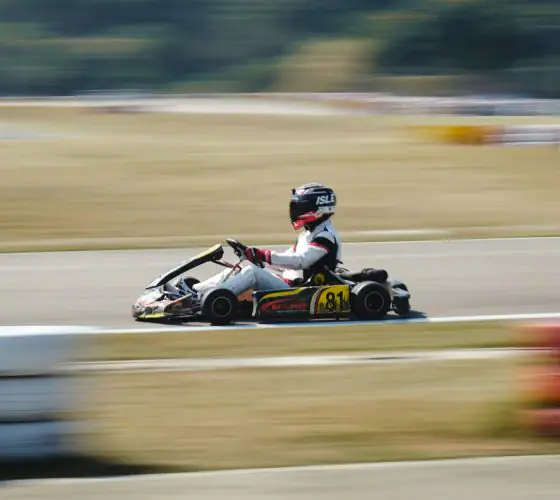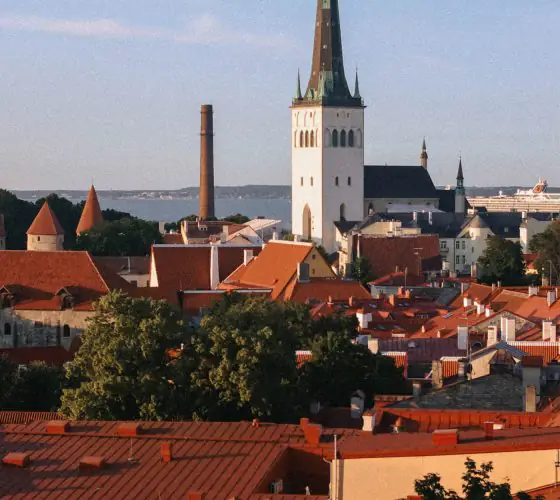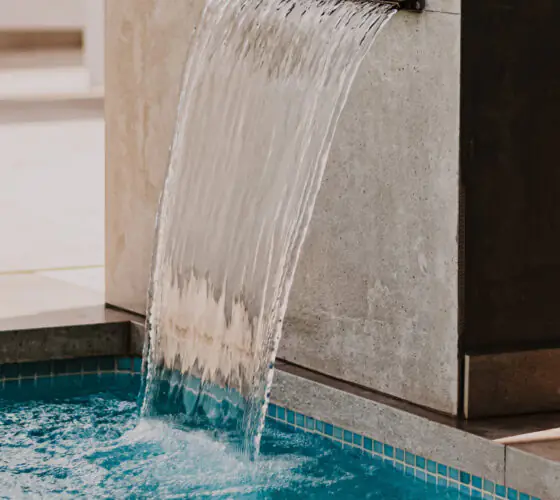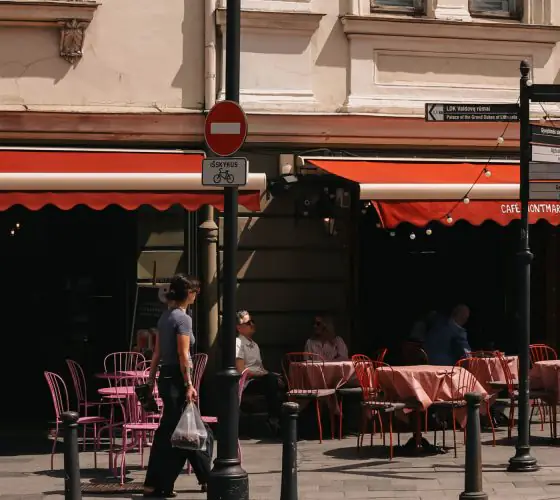
unsplash.com
Another name for the E11 is “Forest Trail”. Its length is approximately 4,700 kilometers. The route passes through forests and meadows in the Baltic States, Poland, Northern Germany and the Netherlands. The westernmost point of the route is the resort harbor Scheveningen in The Hague, Netherlands, the easternmost point is Tallinn.
This is one of the oldest footpaths in Europe: archaeological research shows that messengers and merchants have been following this route since the Middle Ages. This is also indicated by the trail’s name in the Netherlands, Marskramerpad, i.e. “Peddlers Way”.
In the beginning, the trail included only the territories of West Germany, gradually extended to the Netherlands, and after the fall of the Berlin Wall and the reunification of Germany, it was extended to the former East Germany. In its present form, the trail emerged with the expansion of the European Union, when Poland and the Baltic States joined the organization in 2004.

visit.valmiera.lv
E11 in Baltic States
In the Baltic States, just under half of the trail’s route – approximately 2,100 kilometers, of which 747 kilometers are in Lithuania, 676 in Latvia and 720 in Estonia. The trail is divided into 19 sections according to different regions, nature reserves and water bodies. Here is a detailed map of the Baltic part.
It is not very easy to walk the whole trail – together with sightseeing and recreation, it will take several months. If you are traveling from north to south, the end point is Lazdiai on the Polish-Lithuanian border. White-orange-white signs on trees and other objects provide orientation.
Find out what to see on E11 in the Baltics and what nuances you need to consider when preparing for the hike.
Estonia
Route length: 720 km
Local name: Metsa matkarada
The trail starts in Tallinn. Besides the Old Town, a UNESCO heritage site, a must-see is the coastal urban area of Pirita. Walking along the promenade along the Baltic Sea, check out the Cinema Museum, the Estonian History Museum and the Victims of Communism Memorial, an emotionally impressive project by Estonian architectural firm Ninja Studio. Then you’ll see St. Brigitta’s Monastery, a 15th-century ruin that often hosts festivals, concerts and other events.
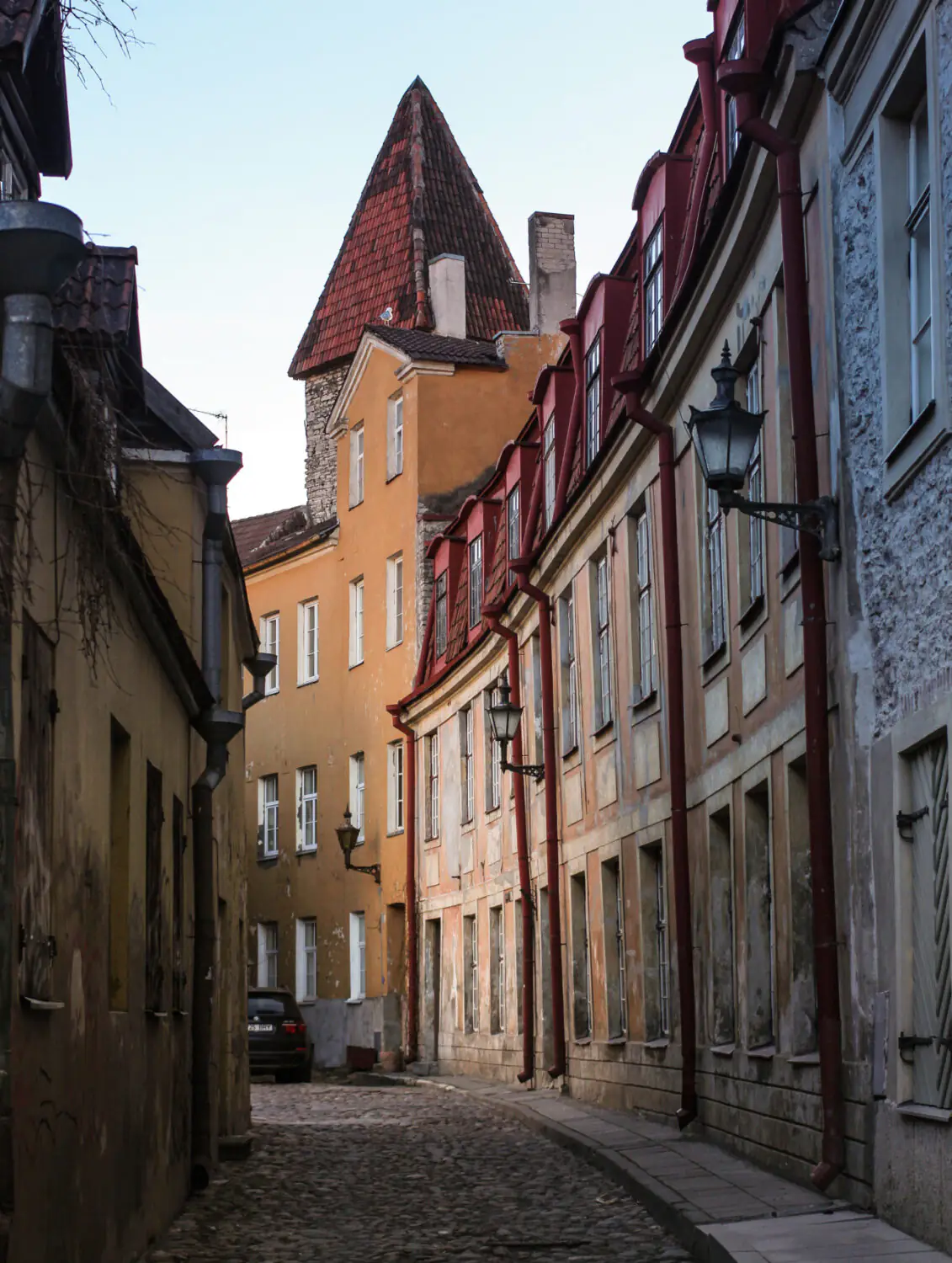
unsplash.com
After Tallinn, the trail will reach the Baltic Klint, a geological monument and the most spectacular rocky coastline in the Baltic States with a seaview. The Jagala waterfall on the river of the same name is worth seeing here. In the woods of Muuga village, look for Suurkivi and Ehalkivi, the largest boulders in the Baltic region.
Further on, the route passes through Lahemaa National Park on the shores of the Baltic Sea. In addition to natural monuments, this part of Estonia is famous for the villages of Altja, where fishermen settled, and Käsmu, where sailors lived. The Maritime Museum is also located there. In the village of Viinistu on the neighboring cape there is an Art Museum. It has been open since 2002. This is the unique private collection, which contains the creations of several hundred works by Estonian artists. It is housed in one of the buildings of a former fish processing plant belonging to a fishing collective farm and overlooks the sea.
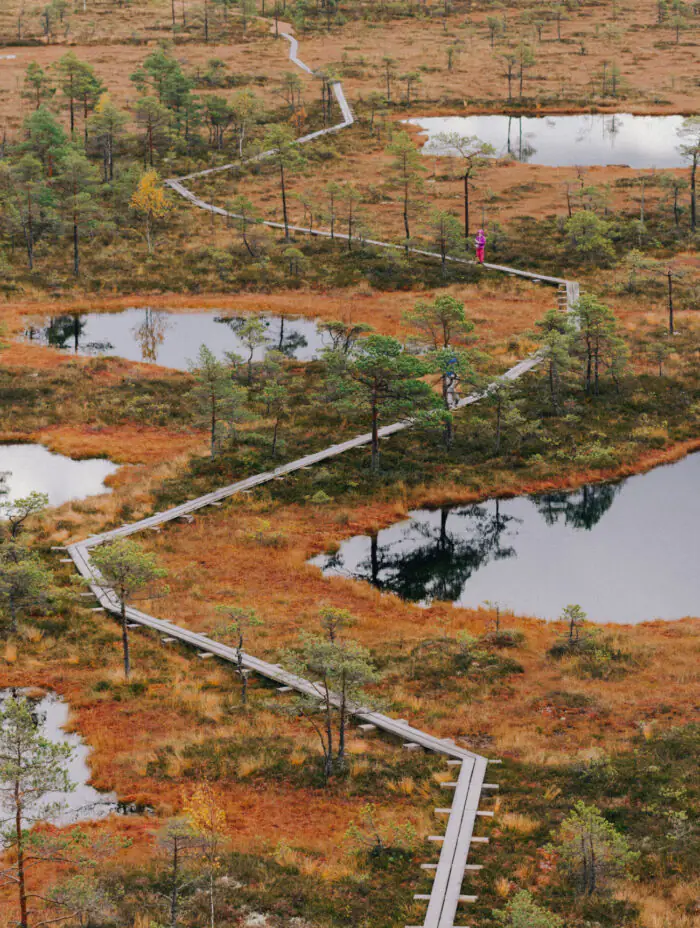
stock.adobe.com

visitestonia.com
To the east of Laahema will be the town of Kunda, which is interesting for its industrial heritage. There is a cement museum here – cement has been produced in Estonia since the 1870s, when the material was considered a novelty and was just beginning to be used in architecture and construction. Kunda also has a beautiful recreational area Lontova seikluspark, a sandy beach with wooden decks and the first Baltic hydroelectric power plant.
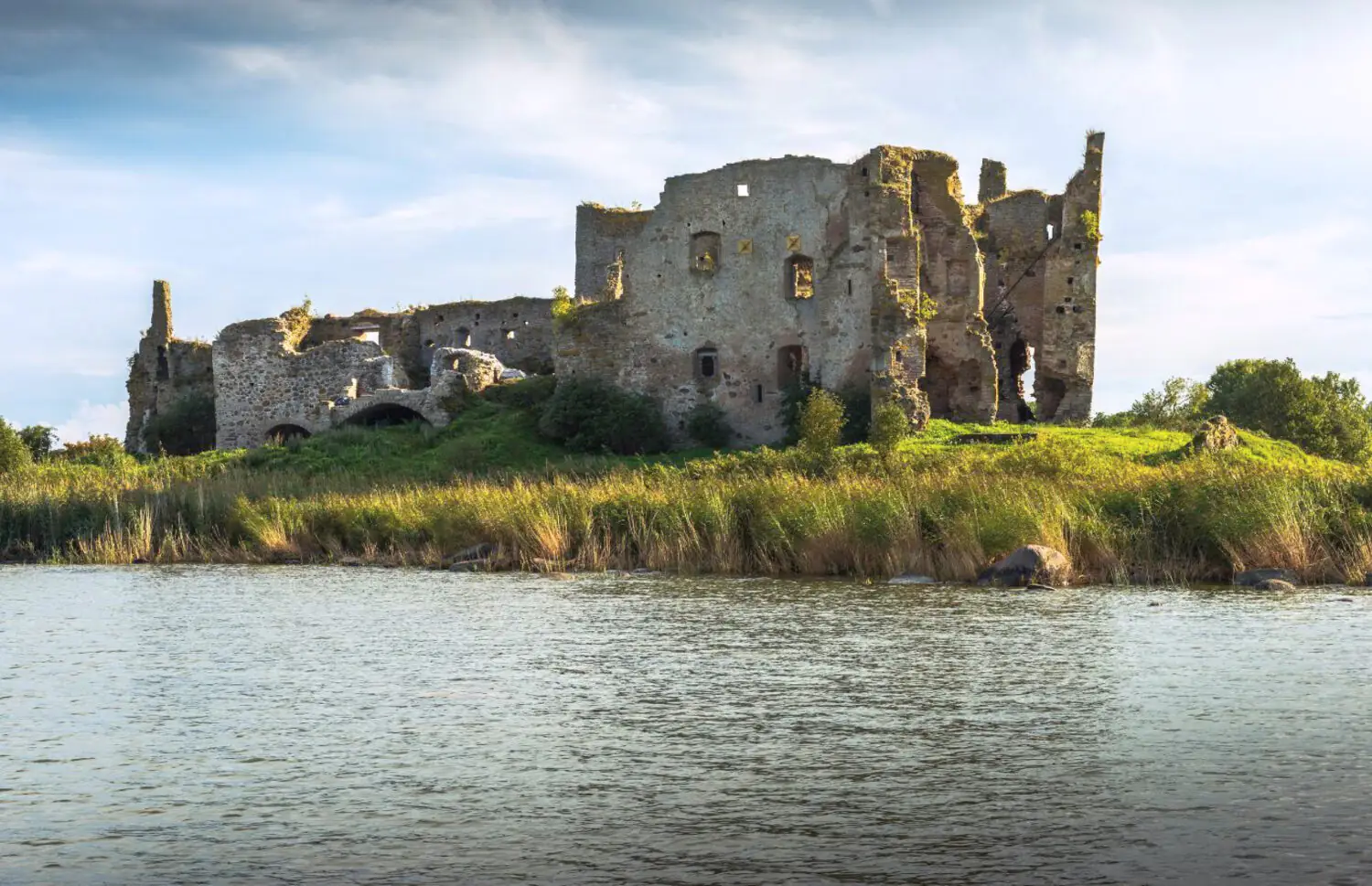
stock.adobe.com
After the coastal village of Voka, the trail turns inland to the Kurtna Landscape Reserve and Lake Peipus, the fourth largest lake in Europe. Along the water surface you will find blueberry forests, beaches and dunes. Noteworthy among the man-made objects are the Mehikoorma Lighthouse and the Estonian Railway Museum on the site of the former narrow-gauge Sonda-Mustvee railroad. Another transport marvel is the Kavastu Ferry across the Emajõgi River, the only manually operated ferry in Estonia.
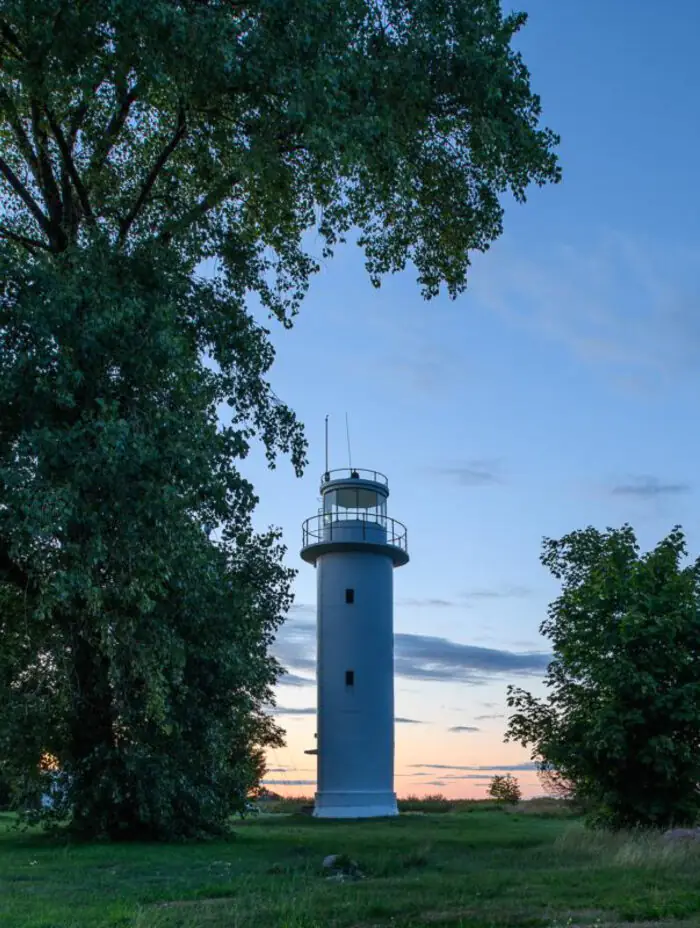
baltictrails.eu
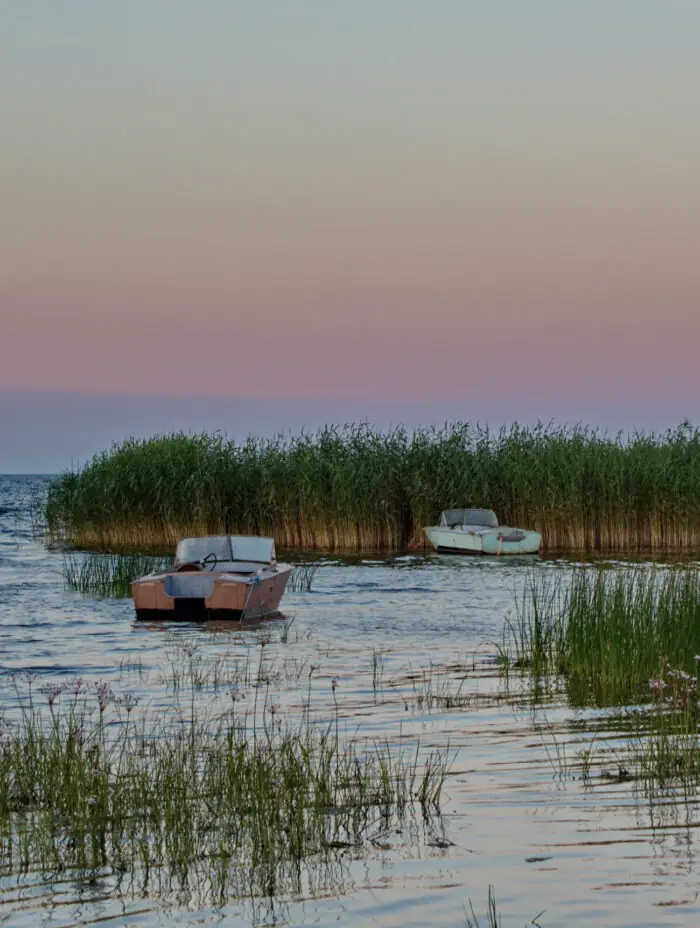
stock.adobe.com
The Estonian part of the route ends with yellow National Geographic frames in the villages of Haanja and Vana-Vastseliina (there are thirty villages in Estonia in total). There is also the Bishop’s Castle and the Piusa caves. In the second half of the XX century sand for glass was mined here, and now there is a visitor center in one of them. On the very border with Latvia is the Väike-Palkna Nature Reserve, where the main sight is the eponymous reservoir lake, a one-of-a-kind body of water with incredibly clear water surrounded by century-old spruce forests.

visitestonia.com
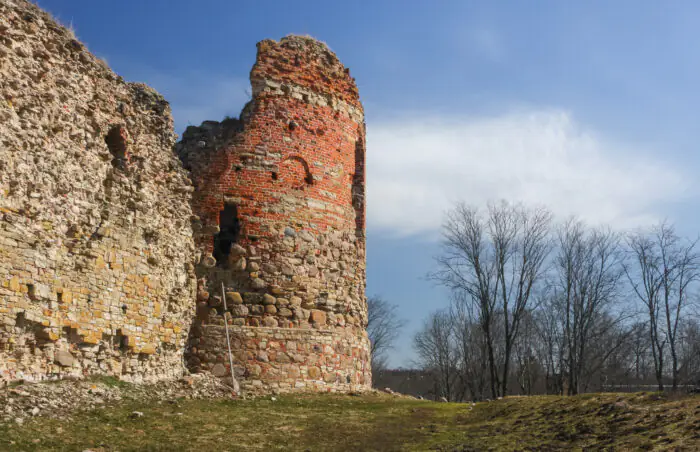
baltictrails.eu
Gastronomic tourism
- In 2022, Tallinn’s restaurants became part of the Michelin Guide for the first time. NOA Chef’s Hall and 180° by Matthias Diether each received one star for outstanding cuisine.
- There is a supermarket with locally produced cheeses and milk in the farmstead of Nopri. You can also see the cows and calves and book a tour of the creamery.
- The traditional culinary heritage of Lake Peipsi is smoked fish and onion pie. They are served at Anna Cafe & Hostel and the Peipsi Kalapunkt Fish Shop.
- The Suur Munamägi observation tower houses a memorial museum and a café at the highest point in the Baltics.
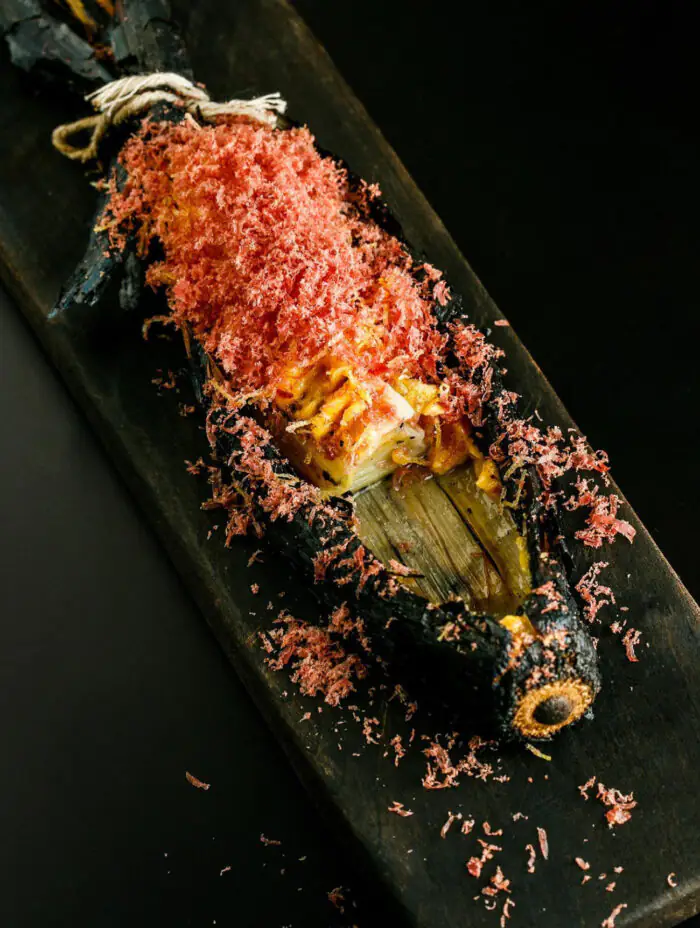
facebook.com/noachefshall
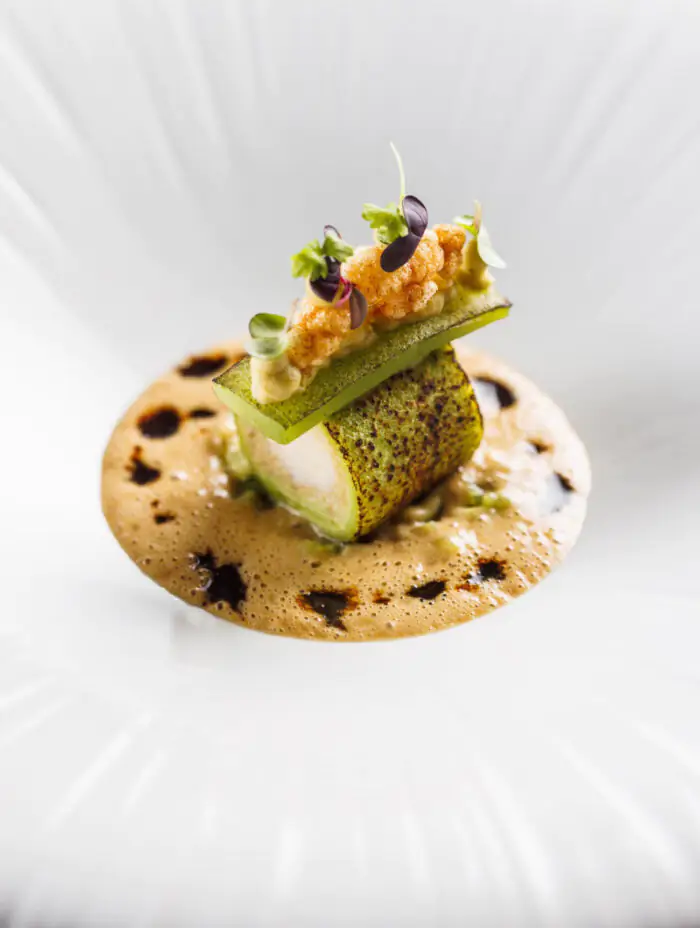
facebook.com/180Restaurant
Mushroom and berry places: Võzu area, between Eisma and Oandu; Lohusuu-Kuru area in the north of Lake Peipsi; historical resort Värska.
Traditions, crafts and culture
- The Võru smoke sauna is a UNESCO Intangible Cultural Heritage Site.
- The Setomaa land on the shores of Lake Peipsi is home to the Seto ethnic group, whose culture is also a World Heritage Site. The most important folk holiday is Seto Kingdom Day, which is celebrated this year on August 5.
- Avinurme Cultural Heritage Centre is a place to learn about woodworking traditions and ancient crafts.
- The village of Varnja with its prayer house is the center of Estonian Old Believership.
Places to stay*
- Microhouse with mirrored walls, 235 euros per night: Airbnb
- Tiny home in the forest, 70 euros per night: Airbnb
- Tent with Scandinavian-style interior, 77 euros per night: Airbnb
- Glamping with sauna and jacuzzi, 40 euros per night: Airbnb
- Microhouse on Lake Peipsi, 100 euros per night: Airbnb
- Viinistu Art Hotel, 75 euros per night: Booking
- Tulivee Villa, 75 euros per night: Booking
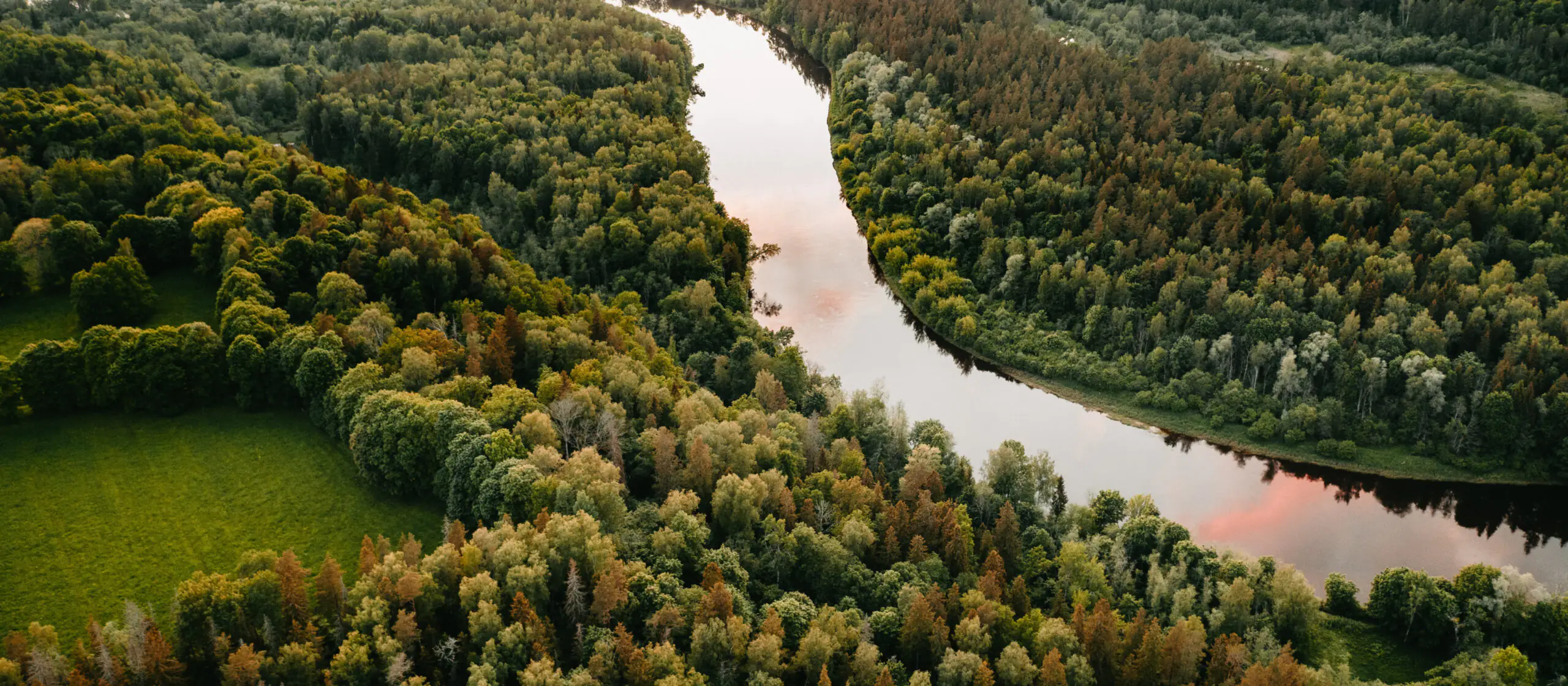
senvietas.lv
Latvia
Route length: 674 km
Local name: Mežtaka
From the Latvian-Estonian border, the route passes through the most beautiful hills of Northern Latvia to the town of Ape and Lake Vaidava. According to ancient beliefs, witches used to dwell there on a rocky cliff.
Approximately 100 kilometers of the route passes through the Gauja, the longest river in Latvia. It is especially pleasant here in spring during the cherry blossoms and in autumn, when the trees are painted in bright colors. On the bluffs of the Gauja River in the town of Valmiera there is a sensory park with the barefoot trail Valguma Pasaule. Next is the town of Seda with its Stalinist neoclassical ensemble, nature reserve and bird watching tower on the edge of the Sedas bog.
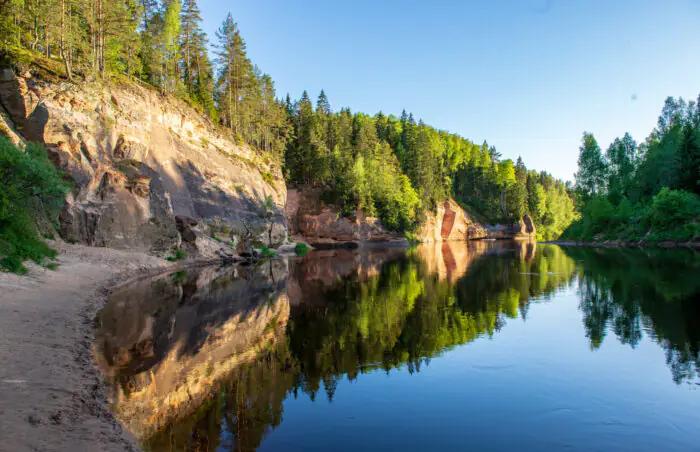
stock.adobe.com
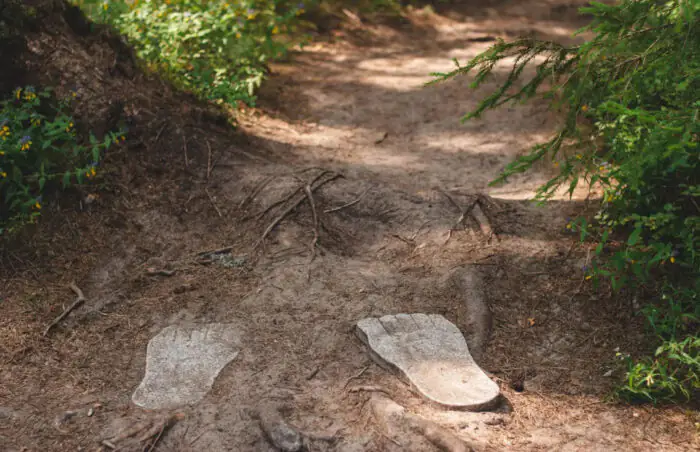
latvia.travel
On the way to Riga is Sigulda, Latvia’s most popular resorts with the medieval castles: Krimulda, Turaida and Cesis. One of the most interesting places is Gutmanjala Cave, the largest grotto in the Baltics. Finally, the road comes to Riga, whose historical buildings, like Tallinn, are classified as UNESCO heritage.
Through the city center, the trail follows to Jūrmala, Dūbulti, Liepula and Būlduri, the most popular beaches on the outskirts of the Latvian capital. Just beyond them is the Ķemeri National Park, where the path winds along bogs and pine forests. The sulfurous waters in these reservoirs are considered beneficial for health, which is why the Kemeri resort appeared here.
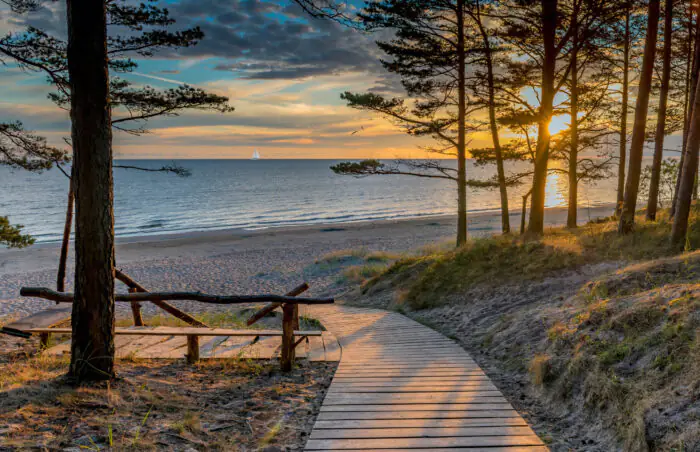
stock.adobe.com
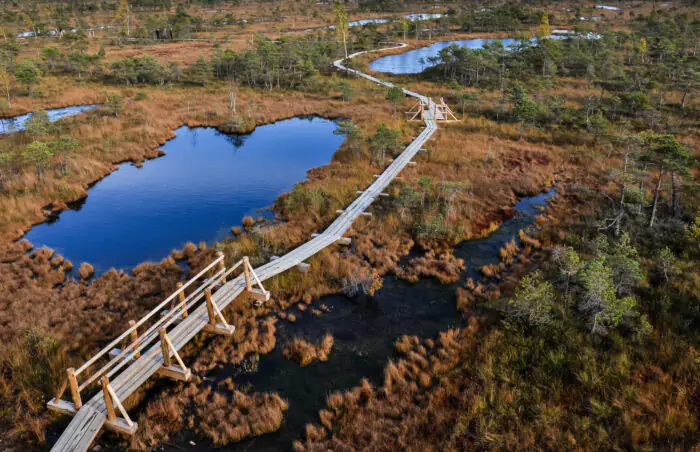
stock.adobe.com
The next major village on the itinerary is Abava, the wine-making capital with vineyards. Next to it is the Pedvale Art Park with 150 open-air sculptures. Be careful: it is said that the park is the residence of the White Princess, a Latvian ghost. She is more often felt than seen and makes people come back or stay in Pedvale.
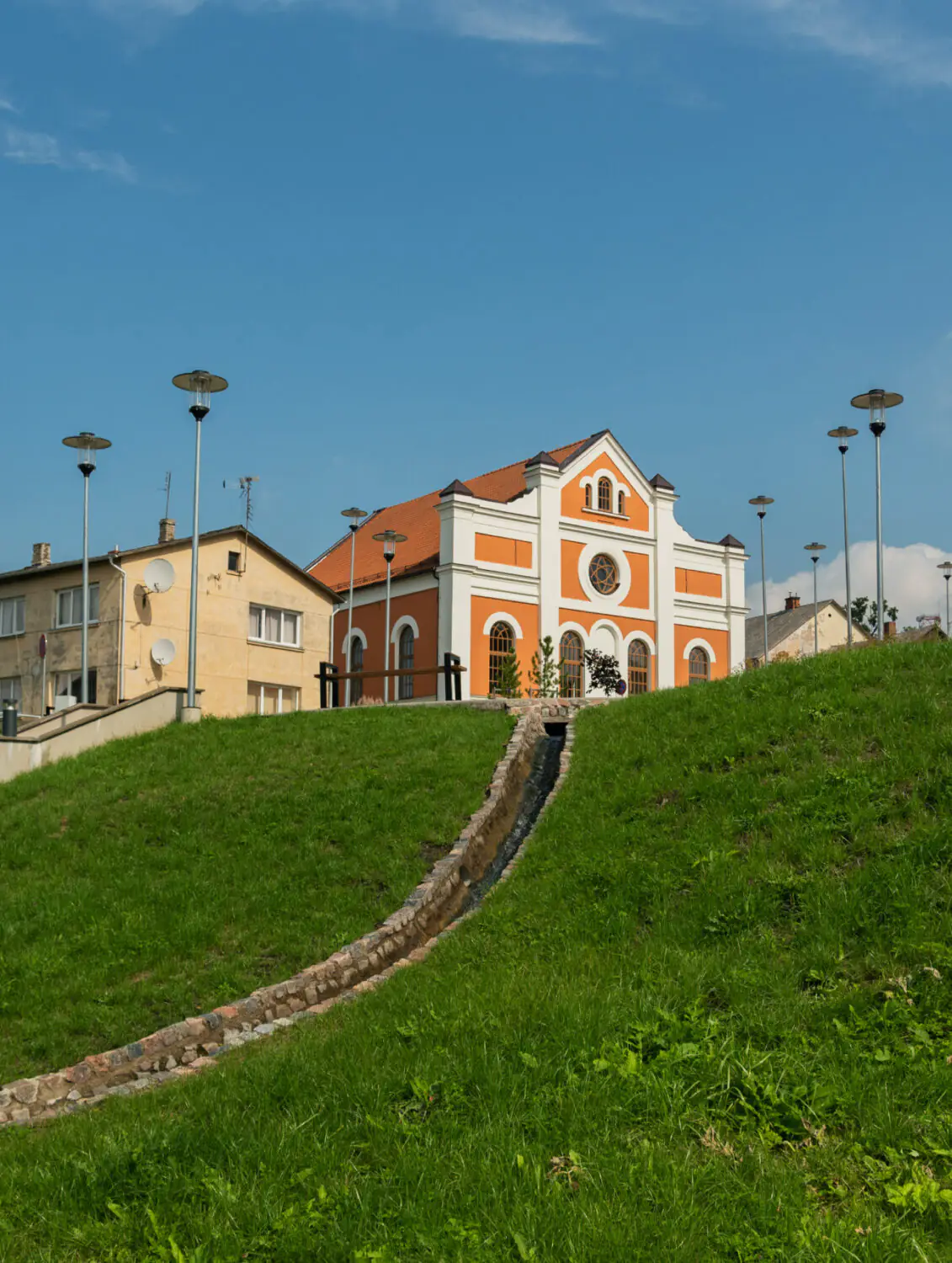
stock.adobe.com
The capital of the Kurzeme region is Kuldiga, a charming town with waterfalls, a deer farm and a peony garden. Many cats walk the streets, and they are considered the symbol of the city. The Venta Rapid waterfall, the widest in Europe, is also located here – in spring you can see bream spawning against the current and bouncing above the water. In the suburbs of Kuldiga you might want to visit Riežupa, a labyrinth of sand caves with a museum.
The southern point of the Latvian part of E11 ends with the Vartai undulating plain, where the corncrake’s chirping can be heard in the meadows. This bird is relatively more frequent in Latvia than in other European countries.
Gastronomic tourism
- Sabile is called the Switzerland of Courland – it is a wine-making town producing wine and cider. Once a year in summer there is a Wine Festival on the Wine Mountain. Cider can be tasted at the Cider House.
- Pure is where Pure Chocolate is made, including very tasty truffles. In the museum you can make your own chocolates and take part in a tasting.
- The Aizpute region is famous for cheese and milk in the village of Kazdanga. You can buy them at the Elpa dairy in this and other locations in Latvia.
- Kandava has a cultural center with a museum, art gallery and craft center. By prior appointment, tastings with acorn coffee are organized here.
- Kāres Apiary offers tours about the production of honey, pollen and bee bread.
Mushroom and berry places: Vidzeme forests, forests in the Tukums – Jāņukrogs section and in the Kemeri area.
Traditions, crafts and culture
- Strenci is a town of rafters, where they have recently restored the tradition of raft building and celebrate the Feast of the Rafters.
- Near Kuldiga is a Field of Cultural Potatoes – an installation in the form of a field of potatoes, which epitomizes Imants Ziedonis’ book “Kurzemite”.
- Sabile is also home of the jewelry workshop, where master Harijs Jaunzems introduces the work of a jeweler, antique jewels and the traditions of wearing them.
Places to stay*
- Tiny house with outdoor jacuzzi, 64 euros per night: Airbnb
- Guest apartment with pines view and terrace, 64 euros per night: Airbnb
- Farmhouse by the sea, 85 euros per night: Airbnb
- Scandinavian-style apartment in Riga, 84 euros per night: Airbnb
- Retro apartment in Aizpute, 59 euros per night: Airbnb
- 2 Baloži: hotel with minimalistic design, from 90 euros per night: Booking
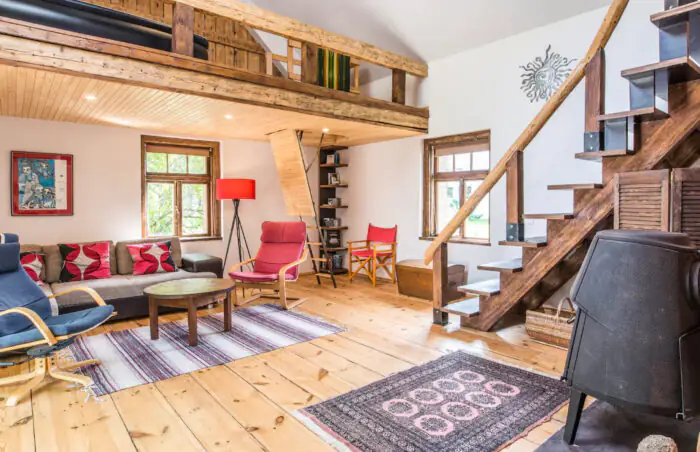
airbnb.com
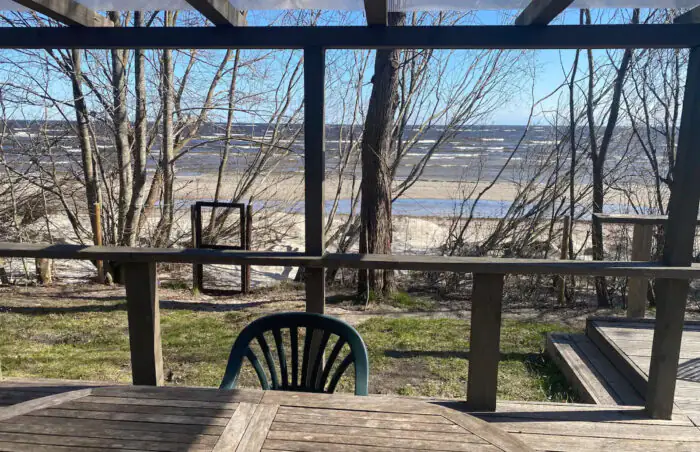
airbnb.com
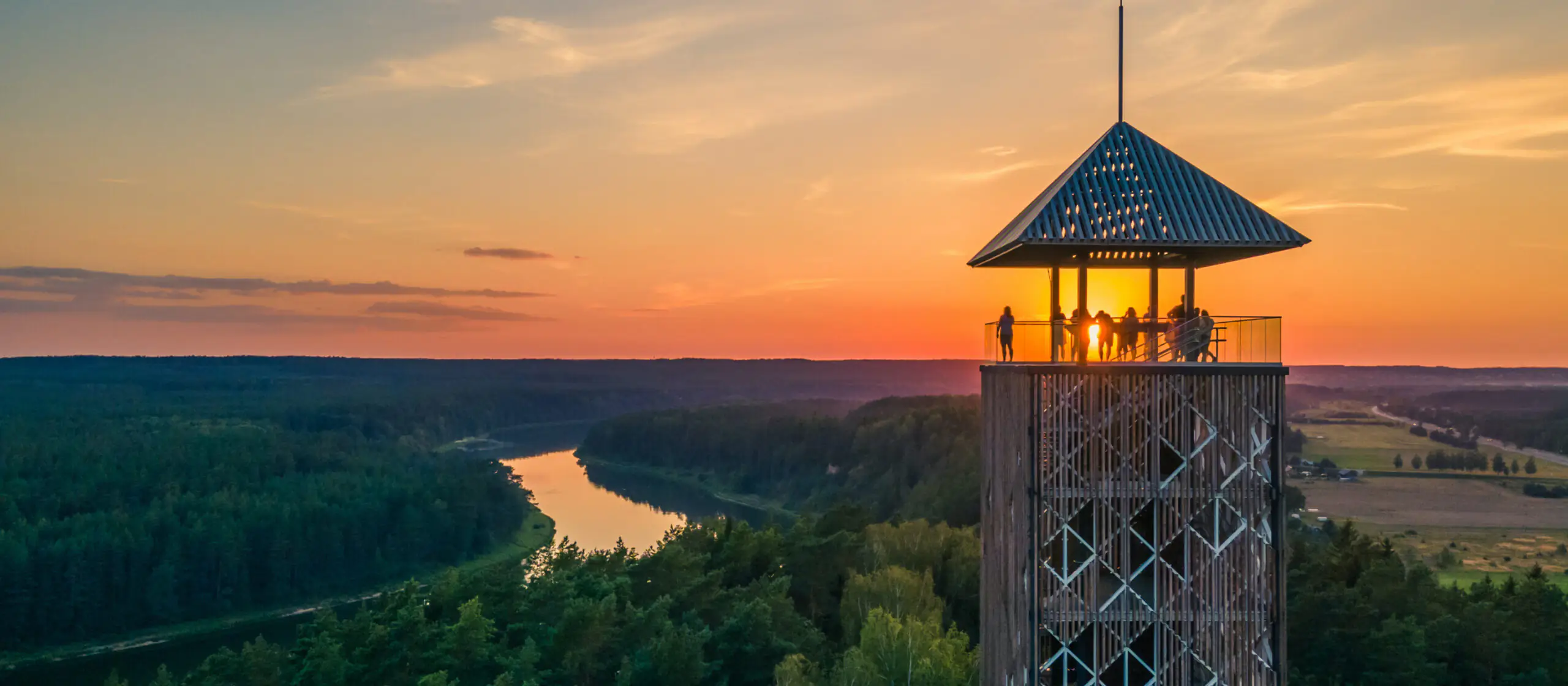
stock.adobe.com
Lithuania
Route length: 747 km
Local name: Miško takas
The Lithuanian part of the E11 starts with the Žemaitija ethnographic region, which has always been a standout compared to other regions of the country. In the capital of the region, Telšiai, there is a large local history museum Alka, where ethnographic values of Žemaitija are collected: historical village architecture, including mills, household items and peasant interiors.
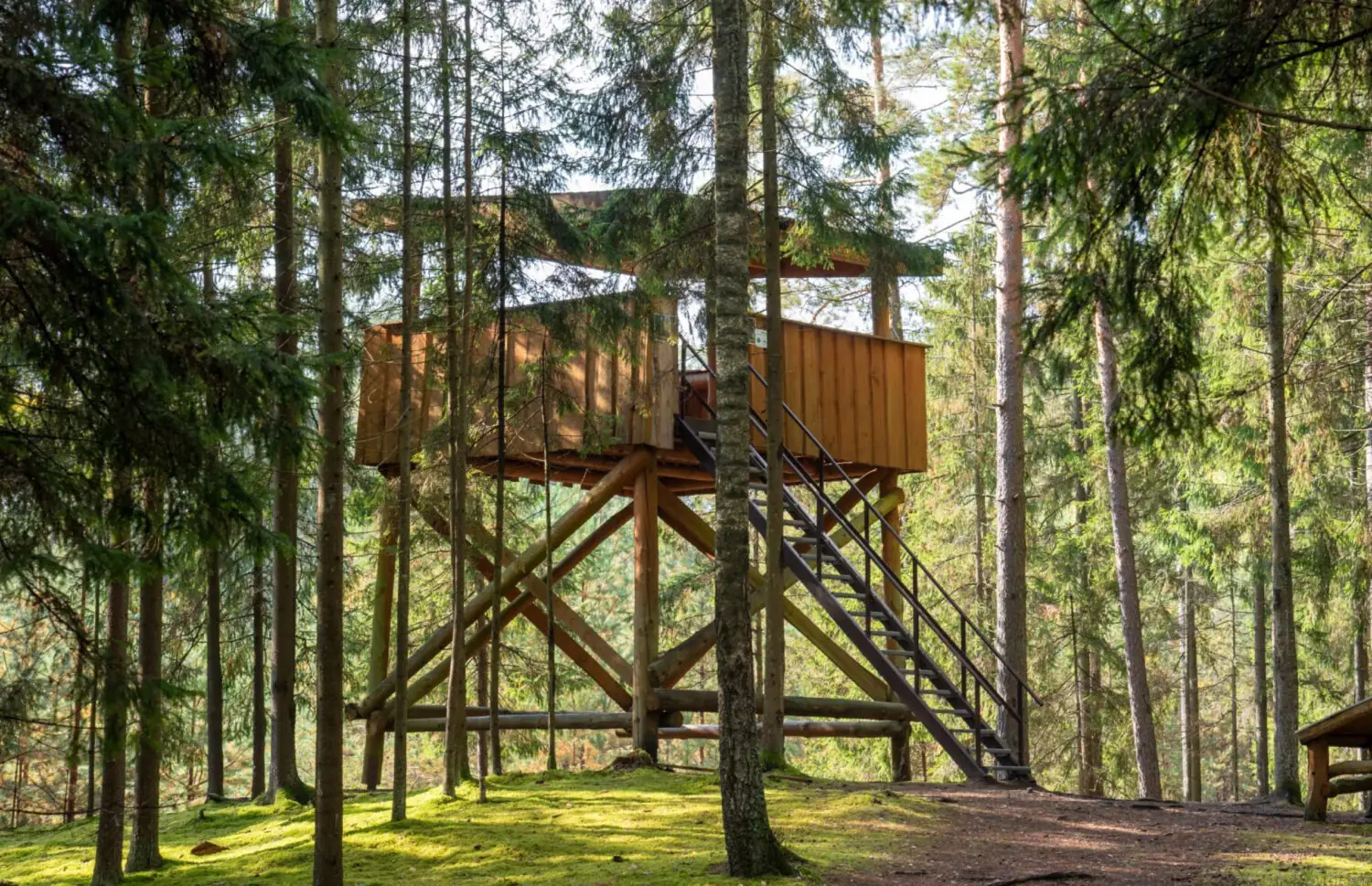
nesedeknamuose.lt
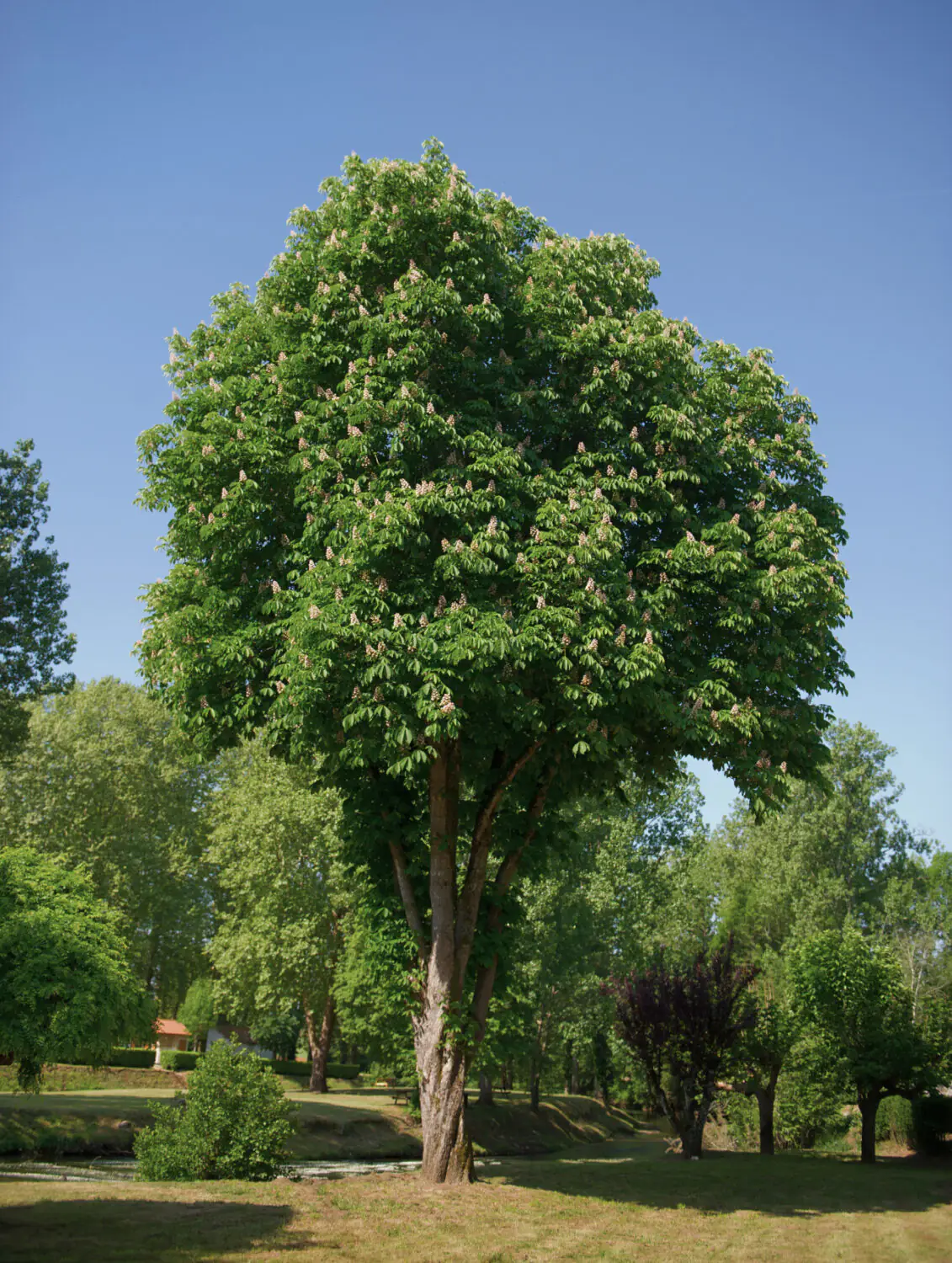
stock.adobe.com
A curious botanical attraction is the Salantai Chestnut in the Salantai City Park, the largest chestnut in Lithuania. In the same region, you can get a glimpse of Lithuania’s rich pagan past: there is an ancient cult site in Šaukliai, and witches once gathered on Mount Šatria.
Through the picturesque Šimša forest, the trail moves to the south of Lithuania, where the Tytuvėnai Regional Park, the Dubis Valley and Lithuania’s highest railroad bridge are located. From here the trail runs to one of the oldest towns in the country, Arjogala, and then along the valleys of the Dubis and Neman rivers to Kaunas. In the first half of the 20th century, the city was the capital of Lithuania and was actively built up, so it has become a reserve of interwar modernism. Čiurlionis National Museum of Art is also worth seeing here.
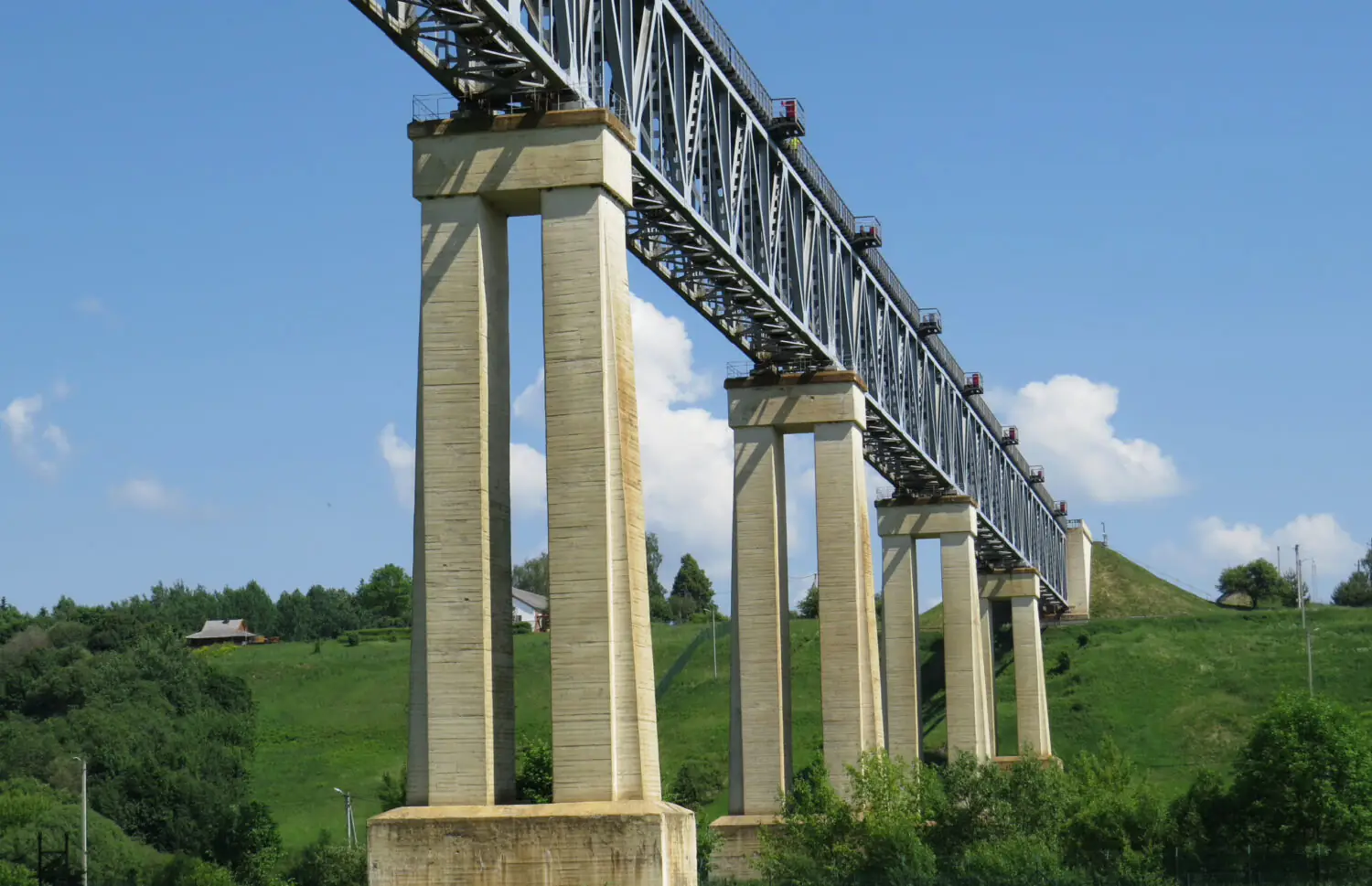
baltictrails.eu
Along the Kaunas Sea Regional Park and through the Kalviai Forest, the road leads to the Birštonas resort. The characteristic features of these places are colorful wooden houses and mineral springs with spa resorts. Downstream of the Neman River is Alytus with the White Rose Bridge, the highest bicycle-pedestrian bridge in Lithuania.
The Baltic part of the E11 ends with the Dzūki National Park, the most forested area in Lithuania. At this point of the trail is the town of Druskininkai, which is also famous for health resorts, the Upside Down House and the Field of Daffodils.
Gastronomic tourism
- The traditional cuisine of Žemaitija is thick paste kastinys made from sour cream and Žemajčiu blinai – pancakes made from jacket potatoes.
- Spurgine is a legendary doughnut shop in Kaunas. For almost forty years, neither the interior, nor the staff, nor the doughnut recipes have changed.
- Punios Panemunės dzūko pirkia recreates the atmosphere of Dzuki life in the late 19th century, and if arranged in advance, you can taste local specialties.
- Etno Dvaras restaurant in Druskininkai with twelve varieties of zeppelins, as well as other meat, fish dishes and sweets characteristic of Lithuania’s largest ethnographic regions.
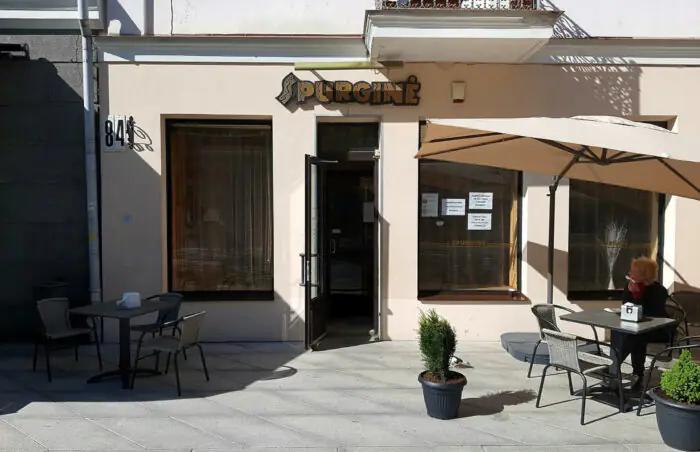
lrt.lt

Mushroom and berry places: Kaunas Sea Regional Park in the Pakuonis – Vaišvydava section
Traditions, crafts and culture
- Near Birštonas in the village of Nemajunai there is a crafts center with an educational program – you can learn how to make potato Dzuki breads and bake them on a cabbage leaf in a special oven.
- In April Kaunas hosts the Kaunas Jazz Festival and in May the Atataria Lamzdžiai Folklore Music Festival.
- Druskininkai is home to the Menu Kalve Crafts Center, where you can learn leatherwork, stained glass, decoupage and much more.
Places to stay
- Farmhouse with sauna, from 85 euros per night: Airbnb
- Barn in an ethnographic manor, from 135 euros per night: Airbnb
- Condo in Kaunas, from 57 euros per night: Airbnb
- Microhouse in Birštonas, euros 105 per night: Airbnb
- Chalet with BBQ in Druskininkai, 100 euros per night: Airbnb
- Mirrored Tree House, from 145 euros per night: Booking
- Spa Hotel in Druskininkai, from 170 euros per night: Booking
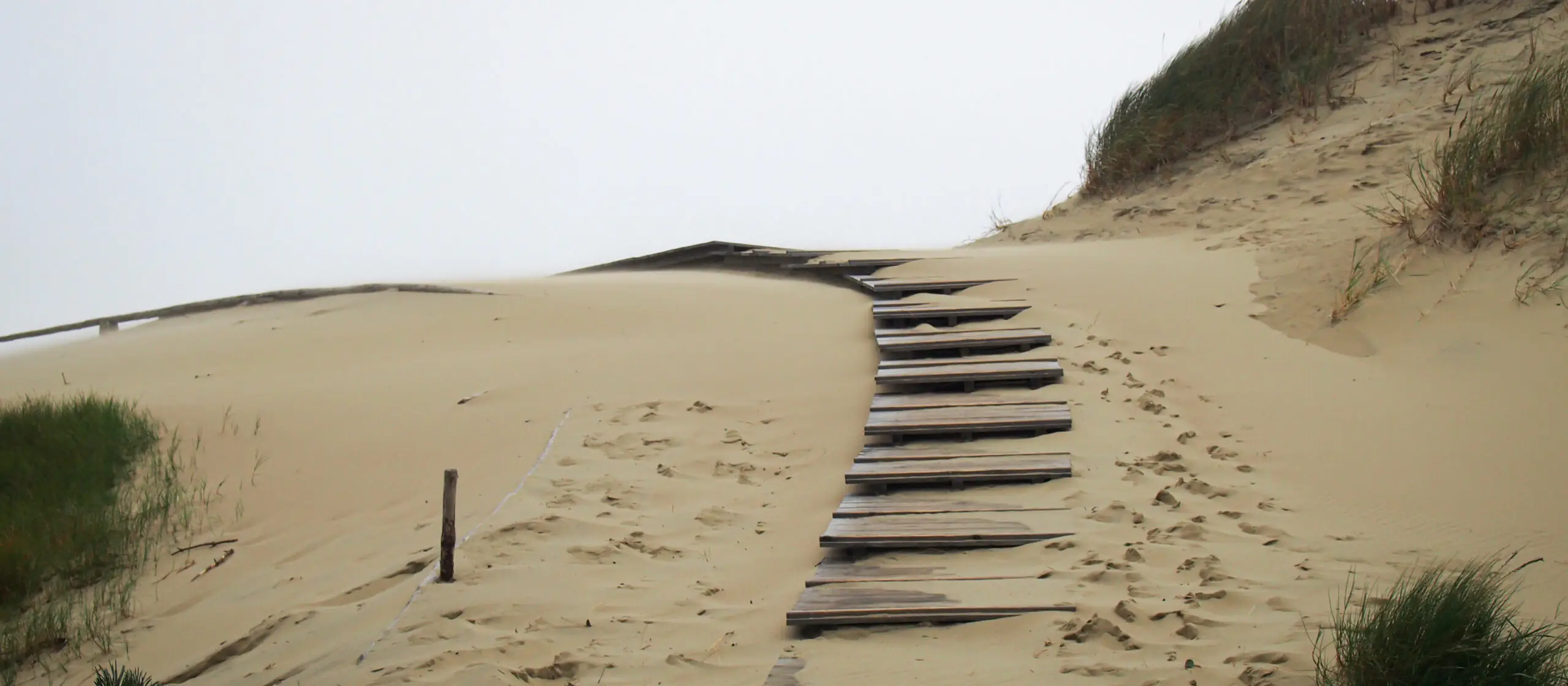
stock.adobe.com
General information and tips for the trail
- Bring a basket for mushrooms and berries, and a notebook to keep notes on birds and other animals.
- ERA’s routes are developed for year-round travel by foot. They can also be traveled by bicycle or horseback.
- Don’t forget about outdoor safety: vipers, wolves and wild boars can be encountered in the forests. It is also worth considering vaccination against tick-borne encephalitis.
- Be careful when walking along the roadsides.
- Each stage of the trail is accompanied by a mini-guidebook (like this) with useful information about stores, cafes, places of interest and more. These can be downloaded by clicking on a section of the trail on the map and then on the PDF symbol on the left side of the screen.
- Download the route coordinate data in advance – you can export it to a map application such as Google Maps.
*The accommodation prices are for two people and do not include local taxes and other additional expenses.


